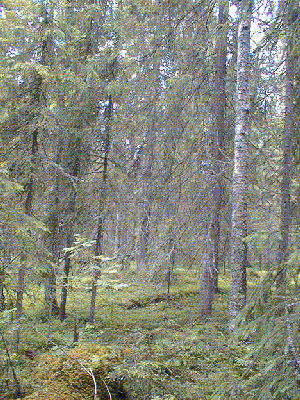Trends in European forests
Trends in European forests

Natural forest in central Finland.
Photo: M. Hallikainen
Wood resources are bigger than ever since the last 200-300 years. This results from the forest management regimes implemented after the second world war, replacement of wood as raw material and energy source due to developments in energy, production and traffic technologies and afforestation of former agricultural land.
Forests have had commodity function since prehistoric times when man started to gather wood, leaves, fruit, berries, mushrooms, medical plants etc., to satisfy his need. Protective function has gained importance with advancing industrialisation and an increased density of population. Today the social and cultural functions predominate in many European societies.
Functioning of forest ecosystems in endangered, biodiversity is decreasing and the quality of human life is weakened in many places in Europe due to high density of human population, intensive utilisation of forests, accumulation of anthropogenic emissions and increasing amount of green house gases in the atmosphere.
International agreements and co-operation has been taken as tools for achieving sustainable development, monitoring and managing of forests. Healthy, properly functioning forest ecosystems with rich biodiversity are agreed to be essential goals.
References: K. Kuusela. 1994. Forest Resources in Europe. European Forest Institute. Research Report 1. Cambridge University Press. 154 p.

